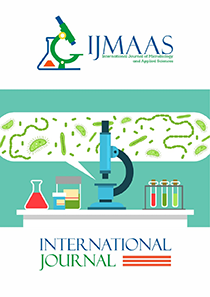Antibiogram and Molecular Characterization of Bacteria isolated from Wound Specimens from a Teaching Hospital in Nigeria
Vol 2, Issue 2, 2023
KEYWORDS
Wounds, antibiograms, Pseudomonas aeruginosa, Bacillus cereus, molecular, characterization, teaching hospital
Abstract
Wound infection remains a common and widespread problem contributing to significant morbidity and mortality. It prolongs hospital stay and increases the cost of hospitalization. Morbidity and mortality is partly attributed to increase in infections due to antimicrobial resistant bacteria which make the choice of empirical therapy more difficult. This study evaluates the antibiogram and molecular characterization of bacteria isolated from wound specimens. One hundred and twenty (120) wound specimens from 70 females and 50 males attending clinic in Rivers State University Teaching Hospital, Port Harcourt were collected with sterile swab sticks, for a period of six (6) months. Specimens were aseptically transported to the Department of Microbiology Laboratory, Rivers State University for bacteriological analyses using standard microbiological techniques and molecular approaches. Antimicrobial susceptibility testing was performed using the disc diffusion method, following the Clinical and Laboratory Standards Institute Guidelines. Bacterial species identified from the specimens were: Staphylococcus aureus (L37597.1), Bacillus cereus (CM000715.1), Pseudomonas aeruginosa (CP000438.1) and Escherichia coli (LC654898.1). Multiple antibiotic resistant bacteria were Pseudomonas aeruginosa recording 26% and Escherichia coli 18% being gram-negatives and Staphylococcus aureus had 39% and Bacillus cereus, 17%, being gram-positives. Gram-negatives were resistant to Cloxacillin, Ceftazidime, Cefuroxime, Augmentin and Gentamycin. While Gram positives were resistance to Augmentin, Ceftazidime, Gentamycin Erythromycin, Cloxacillin, and Cefuroxime. All the bacteria isolated recorded multiple antibiotic-resistant (MAR) index ˃ 0.2 which indicates high level of drug abuse among the patients. Results of antimicrobial susceptibility testing identified a high prevalence of resistance among the isolates, particularly to commonly used antibiotics like Penicillin, Erythromycin, and Augmentin. These findings highlight the need for regular monitoring and surveillance of antimicrobial resistance patterns to guide empirical treatment strategies and infection control measures in wound management at Rivers State University Teaching Hospital.
Current: Vol 3, Issue 1, 2024

Call for papers
The International Journal of Microbiology and Applied Sciences warmly welcome your valuable articles for publication.
